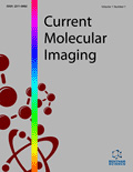Abstract
Optical imaging techniques ranging from mesoscopic to macroscopic levels provide non-invasive, non-ionized and highly sensitive investigation of thick biological tissues with different spatial resolution, penetration depth and contrast mechanisms. Multimodal optical imaging can be understood as the combination of multiple optical imaging modalities and/or fusion with established conventional medical imaging modalities such as computed tomography (CT), magnetic resonance (MR), ultrasound imaging (US) and positron emission tomography (PET). Multimodal optical imaging allows to capture complementary anatomical, physiological and molecular data sets for enhanced diagnosis, therapy monitoring and to assist drug development. Moreover, multimodal optical imaging platforms provides unique tool to validate new imaging paradigms via data cross-validation. Herein, we summarize the recent technical progresses of multimodal optical imaging for thick tissue applications. More particularly, we focus on the mesoscopic imaging regime (optical coherence tomography) and macroscopic imaging (diffuse optical tomography and bioluminescent tomography) applied to subsurface and deep tissue investigation.
Keywords: Bioluminescence tomography, diffuse optical tomography, multimodal, optical coherence tomography, optical imaging.
 19
19

